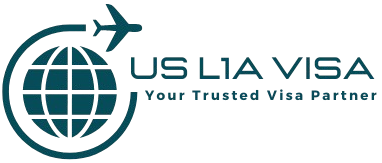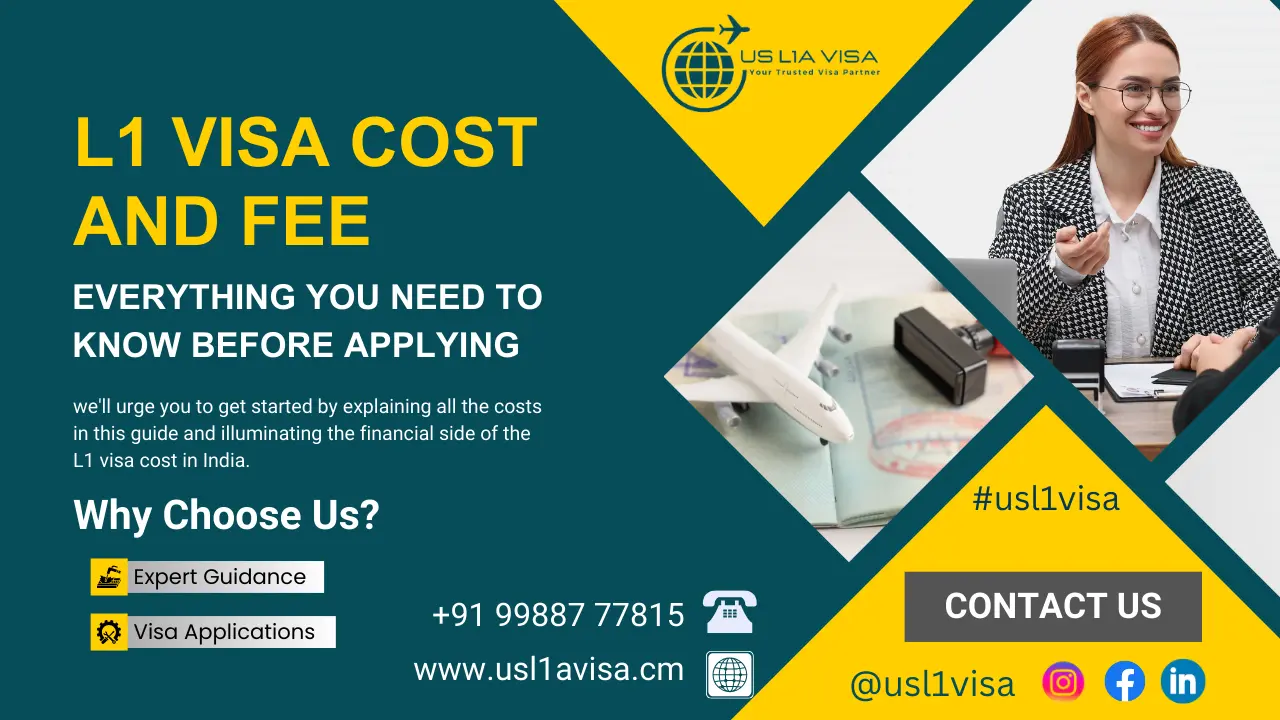L1 Visa Cost and Fee: Everything You Need to Know Before Applying
Getting an L1 visa may be easier than you might think, even though it does require legal paperwork. When it comes to the process’s most intricate and costly elements, this is particularly true. When an employee of a company applies for an L1 visa, or even when an employer plans to do so for a member of his team, it is crucial to know how much the process costs. Whether you’re transferring as a person or as a company, we’ll urge you to get started by explaining all the costs in this guide and illuminating the financial side of the L1 visa cost in India.
What Is an L1 Visa?
An L1 Visa is a type of non-immigrant visa that permits businesses with operations in the United States and overseas to move specific employee categories from their overseas offices to their U.S. offices. Its main purpose is intra-company transfers, which make it easier for managers, executives, and specialist knowledge workers to move about the organization.
Types of L1 Visas:
L1A Visa: For executives or managers.
L1B Visa: For workers with particular skills
L1 Visa Cost and L1 Visa Fee
It is important for employers and employees to understand the costs involved in an L1 visa. The following are the main costs, which are presented in long and comprehensive bullet points for clarity:
- Form I-129 Filing Fee ($460)
This is the base charge for submitting Form I-129, the Petition for a Nonimmigrant Worker, to USCIS. Applicants for an L1 visa must pay this cost. The filing fee for Form I-129 cannot be refunded. Should the application be rejected or withdrawn, the filing fee will not be reimbursed. In order to prevent delays or rejection, employers must carefully fill out this form, which makes this charge a crucial part of the visa application procedure.
- Fraud Prevention and Detection Fee ($500)
All new L1 visa petitions must pay the fraud prevention and detection fee, which is mandated by law to assist USCIS in thwarting fraudulent applications. When the employer files the first petition or when the work situation changes and a new petition is needed, the employer is required to pay this cost. Stay extensions for the same employment are exempt from this rule. In all qualifying situations, employers should budget for this cost, which is a component of USCIS’s larger efforts to preserve the integrity of the visa program.
- American Competitiveness and Workforce Improvement Act (ACWIA) Fee ($750–$1,500)
The ACWIA fee is a mandatory expense for employers and is contingent on the size of the business. The price is $750 for companies with fewer than 25 employees and $1,500 for larger firms with more than 25 employees. The United States’ workforce training programs are funded by the ACWIA fee, which guarantees American workers access to opportunities in highly competitive industries. The first petition and some transfers are subject to this fee; extensions for the same employee in the same post are exempt.
- Premium Processing Fee ($2,805)
Although it is not required, businesses or candidates who want their visa petition processed more quickly are strongly encouraged to pay the premium processing charge. The typical processing period, which might take several months, is greatly slowed down by this service, which ensures a decision from USCIS within 15 calendar days. For businesses with busy schedules, the $2,805 fee, which is paid on top of other filing expenses, is frequently regarded as a good investment. To prevent delays in project timetables or corporate operations that depend on the employee’s transfer to the United States, many employers choose this service.
- embassy Fee ($205)
When a visa applicant makes an appointment with a U.S. consulate or embassy, they pay the embassy fee directly. This fee is required for all applicants for an L1 visa, including dependents, and covers the administrative costs of processing the application. Even in the event that the visa is rejected, the embassy cost is non-refundable and must be paid in the local currency, such as Indian rupees (INR) for applicants in India. By paying this cost, the applicant can schedule a visa interview and move on to the following stage of the application procedure.
- Visa Facilitation Services (VFS) Fees (Varies)
Visa Facilitation Services (VFS) centers, which manage the logistics of gathering biometric information and supporting documentation, may impose additional fees on applicants in India. The cost of biometric appointments, document submission, and courier services for passport delivery are usually included in these fees, though they can vary based on the service provider and region. Since these fees are a necessary component of the application process in many countries, applicants should budget for them when applying through a VFS center.
- Dependent Application Fees ($190 per dependent)
For their L2 visa application, each dependent must pay the $190 MRV fee if the principal applicant is bringing family members, such as a spouse or kids. Dependents may also have to pay for biometrics, medical exams, or paperwork in addition to this charge. Employers frequently pay for dependents’ applications for key employees or senior executives, although this is not always the case and should be verified beforehand.
- Travel Expenses for Visa Interviews (Varies)
Applicants for visas must pay for their own transportation to the closest American embassy or consulate for their interview. In India, this could entail traveling by car, train, or airplane to places like Hyderabad, Kolkata, Chennai, Mumbai, or New Delhi. Particularly for candidates who live far from the consulate, these travel expenses can mount up. If employers want to pay for the entire visa process, they should take these costs into account.
- Additional Supporting Papers and Facilitating Services
There are additional costs involved with creating the documentation required for an L1 visa petition. There are costs associated with processing papers meant for notarization and turning them into certified legal copies. Employees are also hiring immigration lawyers or visa consultants, which can cost hundreds of thousands of dollars, but the benefit is that they receive excellent guidance from qualified experts and have a high probability of success during the process.
L1 Visa Cost in India
When getting an L1 Visa in India, you must pay all the fees listed here plus consider the difference between India Rupees and U.S. Dollars as part of your total cost. Here’s a breakdown of the costs specific to Indian applicants:
- DS-160 Fee in INR
Indian applicants have to pay about ₹15,800 today (calculated using current exchange rates), the same amount as the US$190 fee. You have to pay this fee both on the online visa application site in the U.S. and at specific bank branches in India.
- SEVIS Fee (if applicable)
If you fit certain L1 applicant criteria, you must pay a SEVIS fee online in US dollars as part of your application.
- Visa Interview Costs
Indians who want a visa must visit the U.S. Embassy or Consulate in person for their visa interview. It costs you nothing to take your visa interview, but you might need to pay for travel and lodging if you have to go to a city other than where you live.
- Premium Processing Costs
Many Indian businesses use premium processing to quickly and efficiently move through L1 Visa paperwork. To use premium processing, which takes about 15 calendar days, Indian employers need to pay $2,805. This rate usually converts to around ₹2,08,000 at today’s exchange rates.
Conclusion
Understanding the cost of an L1 visa is a crucial stage in the application process, regardless of whether you are an individual or an enterprise managing a staff transfer. Applicants can avoid unanticipated expenses and make prudent financial decisions by being aware of the exact cost of an L1 visa cost in India.
By breaking out each fee and planning ahead, you can ensure a more efficient and cost-effective process. Even while the expenses might seem high, keep in mind that the opportunities that an L1 visa provides in the US are invaluable, making the investment worthwhile.


